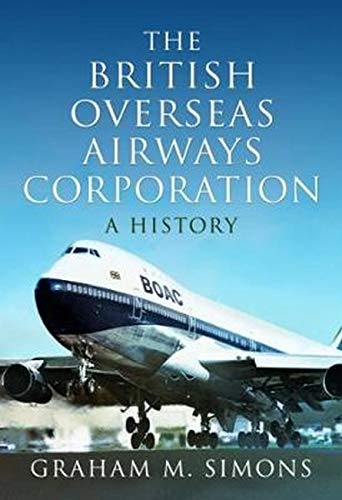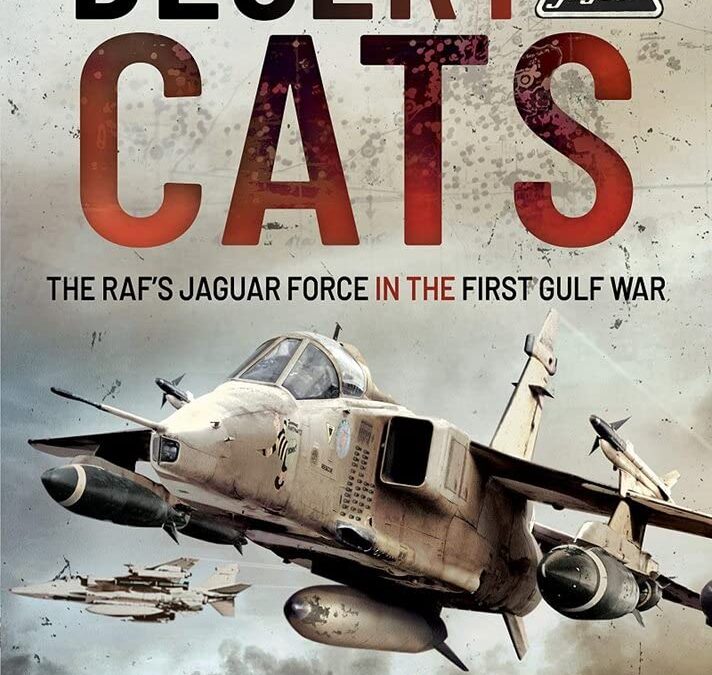
On 2 August 1990, Saddam Hussein’s armed forces invaded and occupied Kuwait. A swift international response followed, which, led by the United States and the United Kingdom, saw the formation of a coalition that formed the largest military alliance seen since the end of the Second World War.
Among the many RAF units deployed under Operation Granby, the codename given to the British military operations during the conflict, was 41 Squadron, with elements taken from 54 Squadron and 226 OCU, which was equipped with the ubiquitous Jaguar GR1 single-seat all-weather tactical strike and ground-attack fighter. In late 1990, the squadron duly despatched a total of twelve aircraft, which soon became known for their distinctive desert pink camouflage, and twenty-two pilots from their base at RAF Coltishall.
Initially conducting low-level strikes, for which the Jaguar Force had always been intended, over the weeks that followed 41 Squadron switched to more unusual medium-level missions. In total, the men and machines of 41 Squadron conducted a total of 617 sorties during Operation Granby.
To complete this remarkable description of 41 Squadron’s part in the liberation of Kuwait, the author has interviewed a number of these pilots. As well as these veterans’ personal reflections, Danny Burt also explores the Jaguars’ record on air-to-ground combat and its performance in theatre, the various upgrades the type receive, and the unique nose art that each aircraft carried. Many of the pictures in this highly illustrated publication have never been published before.
The story is completed by the recovery by the author of one of the Jaguar GR1s flown in the Gulf War Rescued from an Army range in South Wales, the aircraft was moved to RAF Coningsby where its restoration, including the return of its Operation Granby camouflage, is underway.
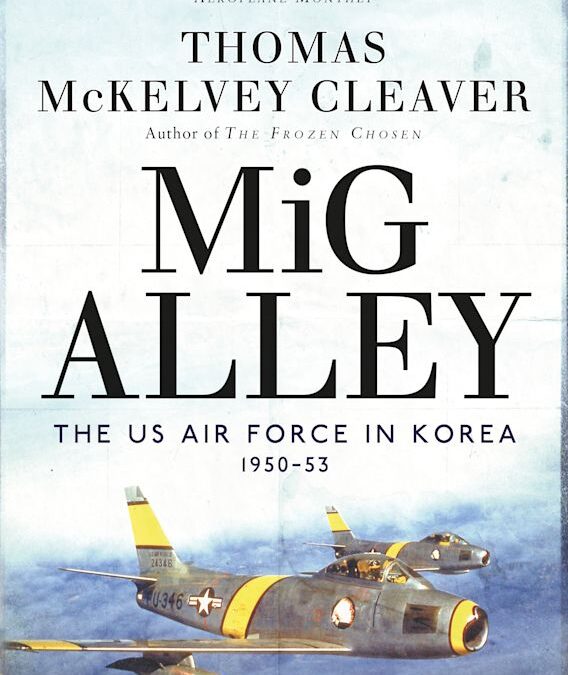
Titled after the wartime nickname for the part of North Korea that was the epicentre of a bitter struggle for air superiority over the Korean Peninsula, MiG Alley offers an in-depth analysis of the US Air Force’s war in Korea, packed with interesting and exciting personal stories based on first-person testimony from both American and Soviet sources.
Following the end of the Korean War, the prevailing myth in the West was that of the absolute supremacy of US Air Force pilots and aircraft over their Soviet-supplied opponents. The claims of the 10:1 victory-loss ratio achieved by the US Air Force fighter pilots flying the North American F-86 Sabre against their communist adversaries, among other such fabrications, went unchallenged until the end of the Cold War, when Soviet records of the conflict were finally opened.
Packed with first-hand accounts and covering the full range of US Air Force activities over Korea, MiG Alley brings the war vividly to life and the record is finally set straight on a number of popular fabrications. Thomas McKelvey Cleaver expertly threads together US and Russian sources to reveal the complete story of this bitter struggle in the Eastern skies.
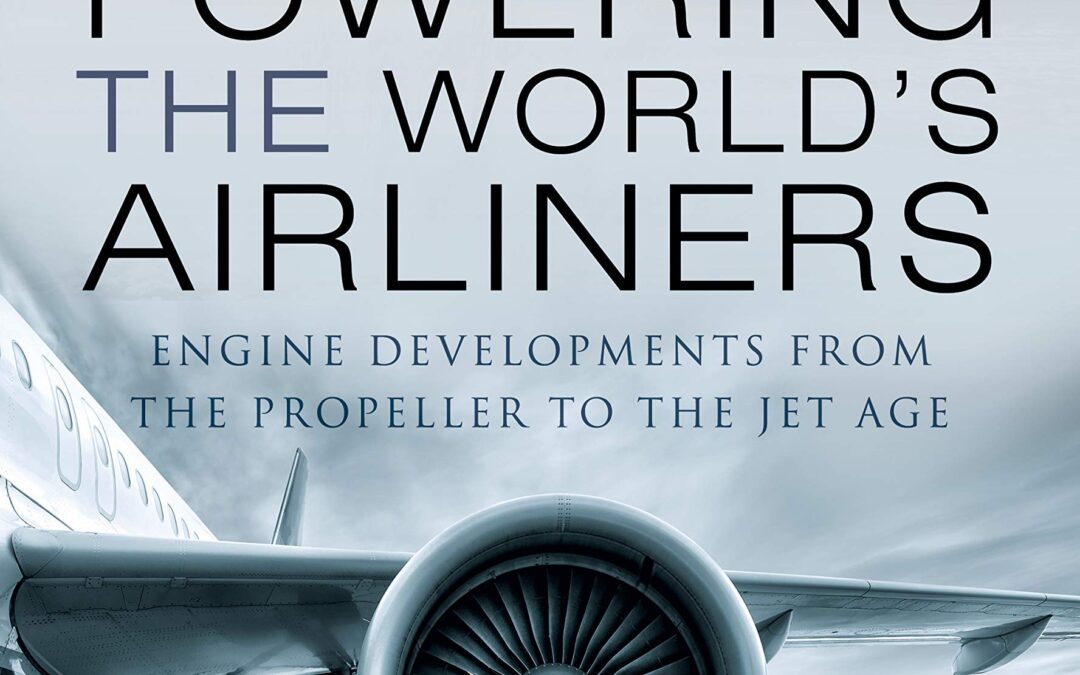
The first efforts of man to fly were limited by his ability to generate sufficient power to lift a heavier-than-air machine off the ground. Propulsion and thrust have therefore been the most fundamental elements in the development of aircraft engines.
From the simple propellers of the first airliners of the 1920s and 1930s, to the turboprops and turbojets of the modern era, the engines used in airliners have undergone dramatic development over a century of remarkable change. These advances are examined in detail by aeronautical engineer and author Reiner Decher, who provides a layman’s guide to the engines that have, and continue to, power the aircraft which carry millions of travelers across millions of miles each year.
Reiner Decher also looks at the development of aero engines during the Second World War and how that conflict drove innovation. He also explains the nature of wing design and how they provide lift and of the considerations of airflow over their surfaces, from the early days of the twentieth century to the present.
To enable an easy understanding of this intriguing subject, Powering the World’s Airliners is profusely illustrated, transporting readers back to the time of each major development and introducing them to the key individuals of the aero industry in each era.
After reading this comprehensive yet engaging story of the machines that power the aircraft in which we fly, no journey will ever seem quite the same again.
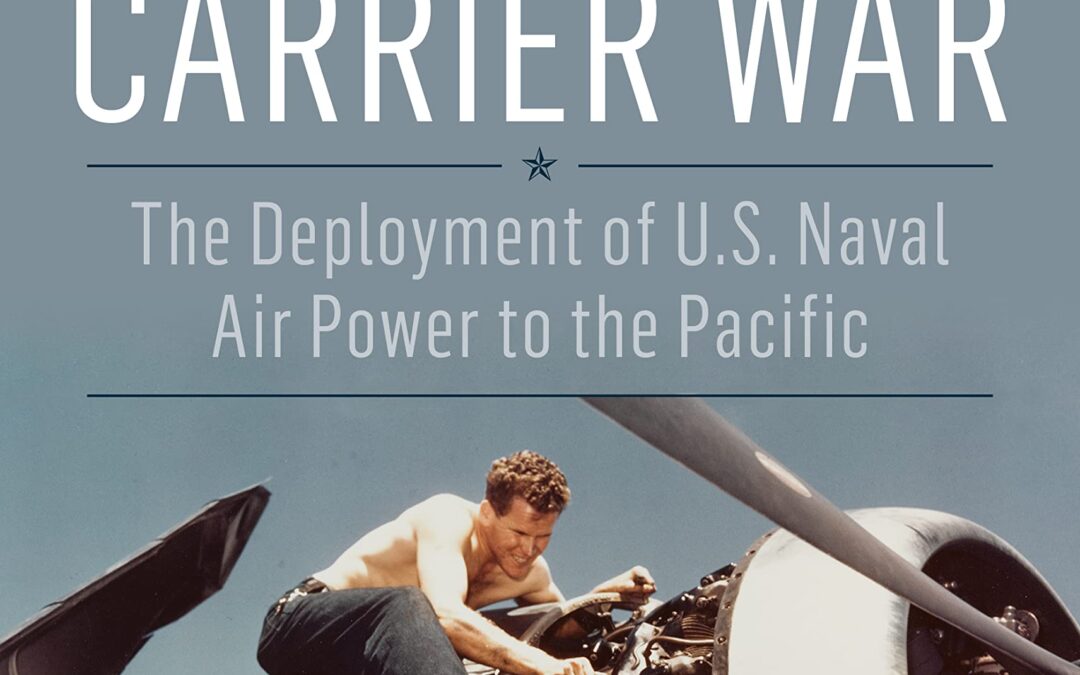
The ability of the United States Navy to fight and win a protracted war in the Pacific was not solely the result of technology, tactics, or leadership. Naval aviation maintenance played a major role in the U.S. victory over Japan in the second World War. The naval war against Japan did not achieve sustained success until enough aircraft technicians were available to support the high tempo of aviation operations that fast carrier task force doctrine demanded. When the United States realized war was imminent and ordered a drastic increase in the size of its aviation fleet, the Navy was forced to reconsider its earlier practices and develop new policies in maintenance, supply, and technical training. Not only did a shortage of technicians plague the Navy, but the scarcity of aviation supply and repair facilities in the Pacific soon caused panic in Washington. While the surface Navy’s modernization of at-sea replenishment was beneficial, it did not solve the problems of sustaining war-time aircraft readiness levels sufficient to a winning a naval air war. Fisher outlines the drastic institutional changes that accompanied an increase in aviation maintenance personnel from fewer than 10,000 to nearly 250,000 bluejackets, the complete restructuring of the naval aviation technical educational system, and the development of a highly skilled labor force. The first comprehensive study on the importance of aircraft maintenance and the aircraft technician in the age of the aircraft carrier, Sustaining the Carrier War, provides the missing link to our understanding of Great Power conflict at sea.

Delve into Formula One’s most iconic rivalries with stunning photography, insight from celebrated F1 journalist Tony Dodgins and a foreword by nine-time grand prix winner Mark Webber.
At the heart of Formula One lies the blistering contests and feuds between the drivers. The drama, personality and thrill of the sport is borne of these fierce duels, where only the fastest and savviest survive.
The rivalry between Lewis Hamilton and Max Verstappen is one of the fiercest we have seen in Formula One in decades. Incendiary both on and off the track, the battles between the seven-time world champion and the hard-driving Dutchman have only served to highlight the importance of these dramatic conflicts to the sport.
In Formula One: The Rivals, Dodgins identifies the most prominent rivalries since the championship’s inception in 1950, including the feud between Hamilton and Verstappen. This highly illustrated book explores the dramatic collisions between drivers vying for the top spot, the bitter wars of words as tension runs high and the controversial decisions that have captivated viewers and delivered truly thrilling racing.
From the slow burn of intense dislike between Ayrton Senna and Alain Prost to the verbal barbs dished out by Nigel Mansell and Nelson Piquet to the clash between James Hunt and Niki Lauda that inspired a Hollywood blockbuster, the rivalries include:
- Hakkinen vs Schumacher
- Hill vs Schumacher
- Alonso vs Schumacher
- Pironi vs Villeneuve
- Mansell vs Piquet
- Prost vs Lauda
- Prost vs Senna
- Hunt vs Lauda
- Hamilton vs Rosberg
- Hamilton vs Massa
- Hamilton vs Verstappen
- Vettel vs Webber
- And many more
This book is a must-read for all fans of the sport, whether you have been following F1 for decades or are a new fan drawn by the intensity of recent seasons.

The Olympic Airways story has fascinated Graham M. Simons for many years. This new book represents the culmination of decades spent researching the history of this fascinating Greek airline. It is a story of evolution, conflict, personality and politics, all set against a backdrop of world and civil wars, coups and counter-coups.During the course of his research, it became apparent to the author that many of the fine details pertaining to the company weren’t widely known, although almost everyone had heard of the towering, controversial, leading figurehead who oversaw much of the central part of the story: Aristotle Socrates Onassis. His colorful life is threaded through this history, lending it drama and multiple levels of intrigue.The airline’s story cannot be told in isolation. Olympic did not spring fully formed into being in 1957. The named company may have come into being then, but its roots were set much further back in history through a number of predecessor airlines – both national and international – who had been using the Hellenic Republic and Athina as the crossroads of the air for the Eastern Mediterranean since the dawn of aviation.This is the story of the birth and dramatic life of an airline with a chequered, controversial and complicated history. Graham M. Simons has skilfully woven all the various threads to create a powerful and important historic record.
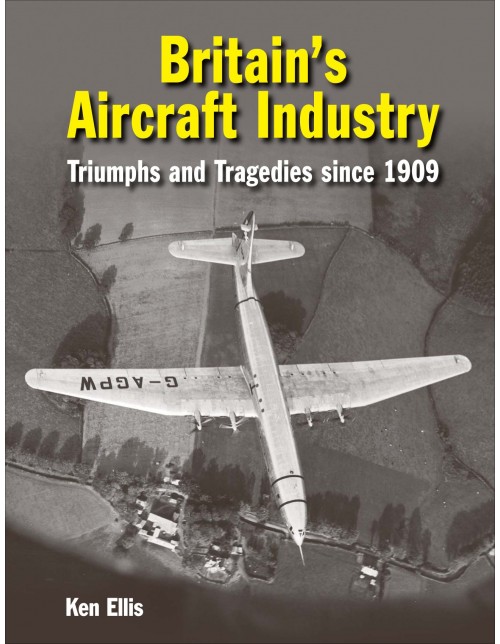
Britain established the world’s first aircraft factory in 1909 after the Short brothers met up with the American Wright brothers and struck a deal. The industry expanded rapidly to rise to the challenge of World War One with such thoroughbreds as the Camel and the SE.5. The post-conflict slump proved to be difficult but classics such as the Moths, the Hart family and the Gladiator maintained Britain’s leadership. Another war loomed and iconic types such as the Hurricane, Lancaster, Mosquito, Spitfire and the Meteor jet appeared.
With the return of peace over 20 major manufacturers faced inevitable contraction. The misguided Bristol Brabazon airliner was a dead end but the superb de Havilland Comet and Vickers Viscount led the field. Canberras, Hunters, Lightnings and the V-bombers met the Cold War confrontation.
For the first time here is a readable, highly-illustrated, examination of the entire industry; its heritage and the changes it faces in the 21st century, both technical and political. The life and times of the 40 ‘big names’ from Airbus to Westland: aircraft, designers, factories, failures and successes, mergers and closures are all explained, supported by statistical tables and copious illustrations. Here is a celebration of a world class industry that remains at the cutting edge of excellence.

Indy Split is a fascinating, authoritative and overdue account of the big money battle that nearly destroyed the sport of Indy car racing.
In the new book, long-time motorsports reporter John Oreovicz dives deep into the divisive battle between CART and the Indy Racing League. With insightful reporting, Oreovicz recounts the political infighting within the industry which climaxed with a 12-year “Split” from 1996 to 2007 between competing forms of Indy car racing and prevented the sport from achieving its potential.
The book traces the roots of Indy car racing’s dysfunction, which began in 1945 when Tony Hulman rescued the Indianapolis Motor Speedway from potential redevelopment. Over the next 75 years, the Hulman-George family used the stature of the Speedway to carve out a powerful position in American auto racing that sometimes resulted in conflict with Indy car competitors. A volatile period in the late 1970s sparked the formation of Championship Auto Racing Teams (CART), and tensions ramped up even more when Hulman’s grandson, Tony George, assumed power in 1990.
In unprecedented detail, Indy Split uncovers how the Split forced Indy car fans, sponsors, broadcasters and participants to choose sides. The book brings to light the confusion and animosity which caused unnecessary damage to the sport, and covers how negotiations driven by legendary racer Mario Andretti and actor/racer Paul Newman ended the Split in 2008, only to have George to walk away less than three years later. The long struggle for stability was finally resolved in 2020 when Roger Penske acquired IMS and the IndyCar Series, securing a bright future for the Speedway, the Indy 500, and the sport.
Longtime motorsports reporter John Oreovicz began attending the Indianapolis 500 as a teenager in the late ‘70s, allowing him to witness the sport’s growth as an avid fan before documenting its decline as a journalist. With a foreword by Motorsport Hall of Fame inductee Robin Miller, arguably Indy car racing’s most vocal advocate, this is the real story of The Split from one of the sport’s most respected voices
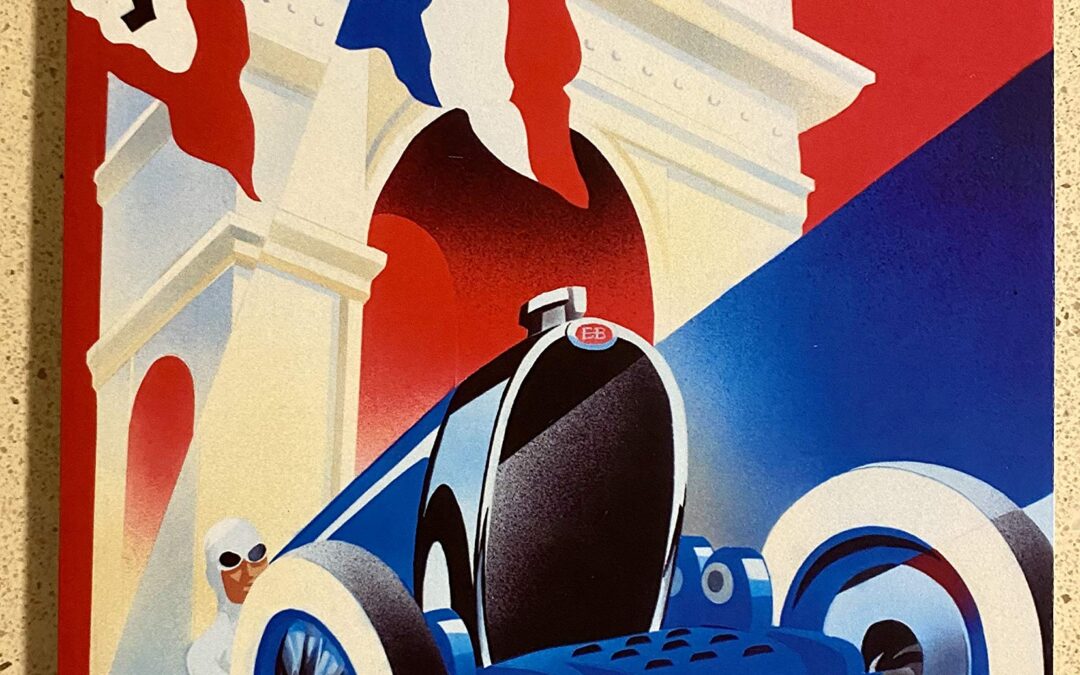
We are true to history: A Bugatti race car driver became a hero of the French Resistance. When German occupiers – in 1942 – seize his factory to build weapons, Ettore Bugatti, a lofty artisan/engineer, wants only to preserve his empire to again make the most beautiful cars the world has ever seen. Driver Alexander Graves, racer and patriot, is thrown into conflict with his revered “Patron.” Can Alexander destroy explosive torpedoes bound for U-Boat ports to sink Allied ships without leveling the factory? Can he save Claire, who no man says ‘no’ to, from her reckless plan to help liberate a stricken nation? With a mechanics ingenuity and with matchless skill behind a Bugatti’s wood-rimmed steering wheel, Alexander starts the race of his life.
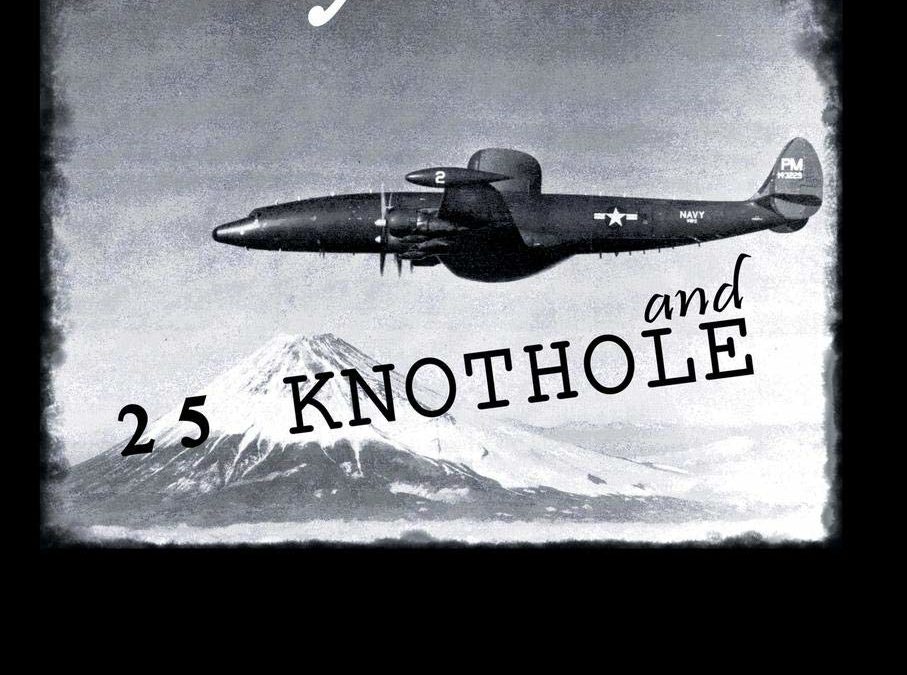
In the early hours of April 17, 1952 World War III nearly began. The Distant Early Warning line (DEW) was still an idea to be addressed by the U.S. government and its top military brass. “Willy Victor and 25 knothole” is about that vital cog of airborne defense against the real threat of a sneak attack (atomic and/ or airborne) against the American mainland. Bruce Jarvis, former naval flight crew member, recounts the operations of his Airborne Early Warning Squadron (AEWRON) experience, flying in a Lockheed Super Constellation Warning Star ( Navy designation Willy Victor-2) in support of the DEW line that became fully operable in the year 1957. It introduces readers to the flyers’ lives during the Cold War, and with little fanfare (but much moxie) recalls the unknown heroism of some of the front line troops in the form of a fictional but typical crew of naval airmen, of the now defunct conflict between Russia and the United States. Although the crew is fictional, their stories are true.
The entire U.S. air defense effort was conceptualized by what is known as the Lincoln Summer Study Group in 1952. It was in response to the panic in NORAD ( the North American Defense Command ) when “bogeys” or aircraft contrails were spotted near northern Canada-the U.S. had neither warning nor the means to combat its threat, if any. Had Kruschechev so chosen, the bogeys could have been the vanguard of a Russian first strike on the heart of America. The stories in “Willy Victor and 25 knothole” include purposes of the AEWRON missions, their importance, the people who flew them, personal anecdotes, their ground crews, their families and women and their sad or happy moments. It shows the human face of a war mostly fought in the rarefied scientific/technological and secret ops realms. Bruce Jarvis has taken good care in writing this book so that Americans may know and not forget the few good men who put their lives on the line during the cold war to protect the United States of America.
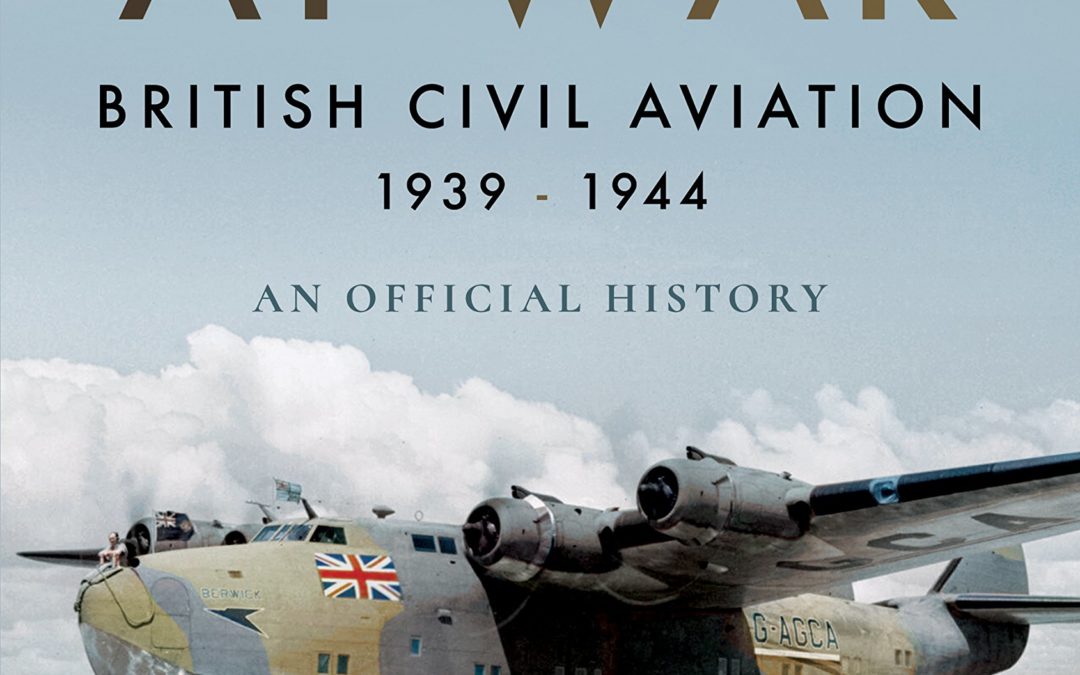
The brave efforts of the pilots and crew of the RAF during the Second World War are well-known but there was another body of aviators that played a significant role in the conflict – the men and women of the civilian airlines.
The British Overseas Airways Corporation (BOAC) was formed shortly after the outbreak of war in November 1939 by the amalgamation of Imperial Airways and British Airways. During the war BOAC operated as directed by the Secretary of State for Air, initially as the transport service for the RAF and with no requirement to act commercially. The inaugural BOAC had eighty-two aircraft, a large proportion of which were seaplanes and flying boats. With 54,000 miles of air routes over many parts of the world, ranging from the Arctic to South Africa, from the Atlantic coast of America to the eastern coast of India, the aircraft of the BOAC kept wartime Britain connected with its colonies and the free world, often under enemy fire. Over these routes, carrying mail, cargo and personnel, the men and machines of BOAC flew in the region of 19,000,000 miles a year.
There can rarely have been a moment, throughout the war, when aircraft of the British merchant air service were not flying somewhere along the routes, despite losses from enemy action. This book explores much of their war history between 1939 and 1944 (the year that marked the 25th anniversary of British commercial aviation), something of their lives and their achievements in linking up the battlefronts – at times cut off from any direct land or sea contacts with the Home Front – and in transporting supplies through the new, dangerous and often uncharted regions of the air. With the ‘Speedbird’ symbol or the Union Flag emblazoned on its aircraft the BOAC really did fly the flag for Britain throughout the wartime world.
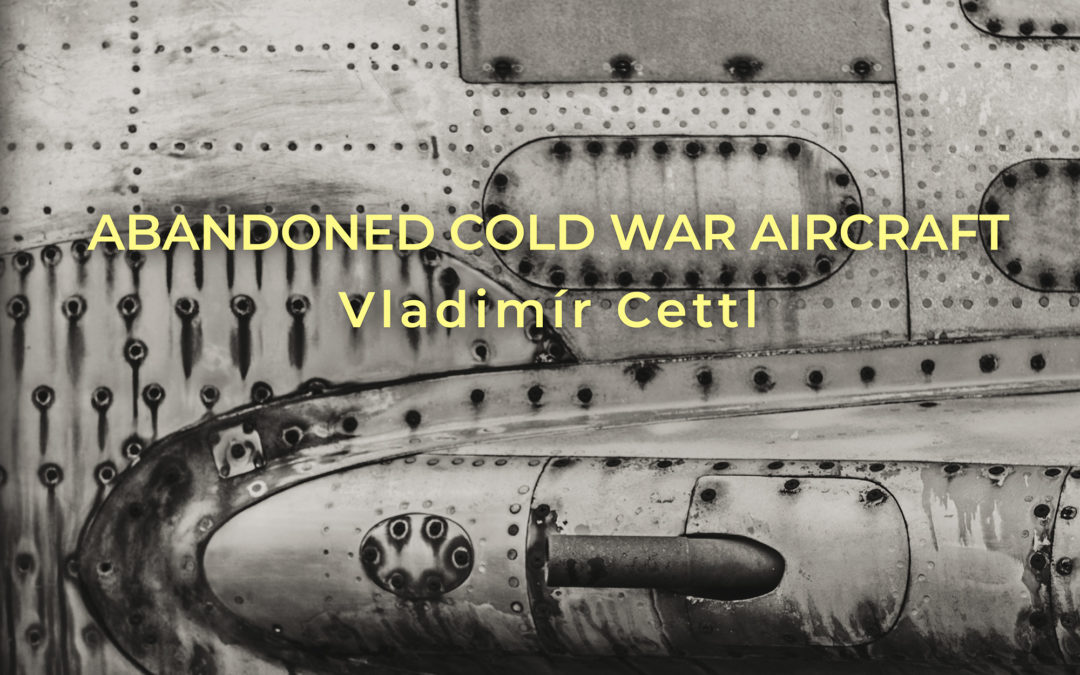
The latter half of the twentieth century was full of illusions. We lived in an illusion of peace, an illusion that Europe was not at war and that the horrors of the Second World War would not be repeated. But in reality, society was preparing for the next war. As children we donned thin plastic ponchos and practiced how to survive a chemical or nuclear attack out in the fields. The threat of a new military conflict hung in the air constantly. History now denotes this time of apparent peace more accurately as the Cold War. It lasted for several long decades, passed through various phases, crises, milestones, victories and defeats, but peace was only illusory.
Air forces were one of the most important military branches during this era. East and West competed in speed, flying range and numerical superiority. Technical development forced both sides to quickly replace large numbers of machines, which is why we can now find surplus aircraft from the Cold War on display in military museums.
As I started my search, I soon found that, as opposed to old cars, planes are not often found in barns or backyards. It is not easy for private owners to get their hands on military machines. I hence focused on museums and associations for aviation enthusiasts. The Czech Republic is a wonderful country in this sense, because Czechs are sentimental people and try to keep things alive even if it does not make sense financially. I presume that is why we have so many aviation museums. But the thing is, I am not interested in those nicely restored, polished planes. I am after old, rusty ones. And so I had to look for collectors who could not afford expensive restorations and who were showing history the way I wanted it – authentic and dilapidated. And since repairing planes is such a demanding hobby, I ended up finding plenty. The photos were taken 2014–2019 in five countries: Czech Republic, Slovakia, Germany, Poland and Cuba.
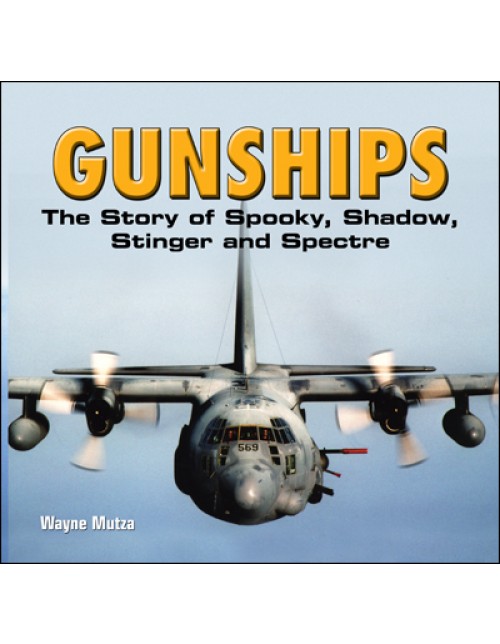
Gunships: The Story of Spooky, Shadow, Stinger, and Spectre tells the dramatic story of transforming military cargo transports into deadly ground-attack aircraft used by the U.S. and other countries in worldwide conflicts from the Vietnam War to the Middle East today. This comprehensive and detailed accounting of gunships begins with piston-powered, WWII-era C-47s and progresses to the four-engine turboprop C-130 Hercules, showing how gunships evolved from using 20mm miniguns to 105mm Howitzers with digital-age Battle Management Centers housed onboard. These highly effective airplanes made history by removing the safe haven of night operations from the enemy, and allowing strategic victory that might not have otherwise been possible. Author Wayne Mutza not only carefully researched all of these aircraft and their paths to reality, but also tells the tale of the brave and persevering men who believed in this unique weapon system and who saw its development through to the end. This book features a wealth of outstanding color photographs, many of which have never before been published, and also contains detailed appendices documenting gunship production data, combat units, and aircraft losses.

Dubbed ‘Warthog’ – or just ‘Hog’ – by those who fly and maintain it, the Fairchild Republic A-10 Thunderbolt II is the world’s undisputed close air support attack jet. As tough as it is ugly, it has built a fearsome reputation as a tank buster and infantry killer in conflicts around the globe, and its GAU-8 Avenger 30mm cannon strikes fear into the hearts of all unlucky enough to be on the wrong side of it.he A-10 was clutched from the jaws of retirement by the 1991 Gulf War. At the time of the conflict, the United States Air Force was making plans to shed it’s A-10 fleet, citing obsolescence and redundancy. As the ensuing conflict showed, nothing could have been further from the truth, and no other airframe could have provided the US and Coalition commanders with the sort of forward air control, close air support, combat search and rescue, and tank busting capabilities that the Hog did. Since then the A-10 has delivered capabilities to battlefield commanders in the Balkans (1990s), Afghanistan (2001 onwards) and the second Gulf War (2003 onwards), and Libya (2011). A-10s have flown around 11 per cent of Operation Inherent Resolve sorties (striking IS targets in Iraq) since combat operations began in August 2014.
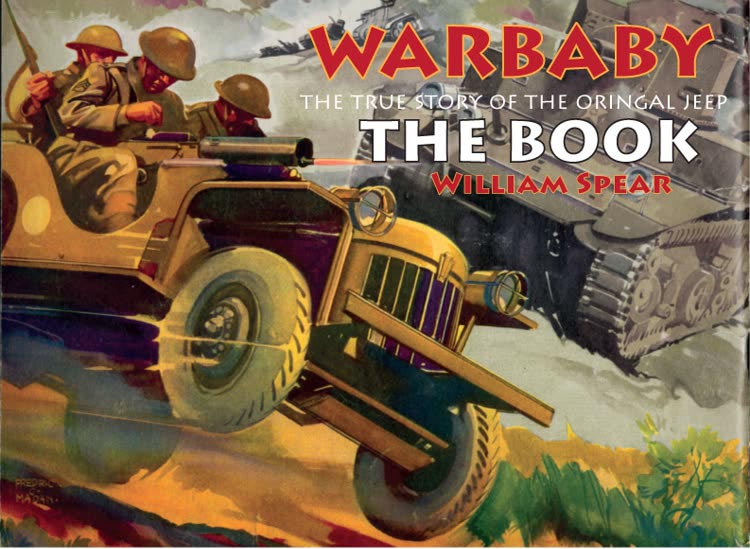
The True Story of the Original Jeep
On September 21, 1940 in Butler, Pennsylvania an awkward looking miniature truck emerged from the toolroom of the American Bantam Car Company.
Stunning even its creators with its performance it was delivered for Army testing two days later, where it was recognized immediately as a tactics changing weapon of enormous significance and was dubbed a “jeep” by its testers. It went on to become one of the most decisive weapons of WWII, and the Army was not to be without one for decades to come. Displayed in some of the world’s most famous art museums the jeep is considered one of the most elegant American industrial designs of the 20th century and some regard it as the the most significant and influential automobile in American history.
Despite all this, in the 76 intervening years which have been filled with thousands of books and articles, internet sites, and films extolling the virtues of the jeep, the complete story of the jeep’s origins have remained largely a mystery, shrouded by fragmentary, conflicting and incomplete evidence, conjecture, supposition or outright guessing.
At long last in William Spear’s definitive new book WARBABY is set out the true story of how the jeep came to be.
The history is not only revealed in full, but emerges as one of the most interesting and exciting stories in automotive history, from beginning to end filled with dozens of compelling characters in dramatic, high risk situations.
Whether your interest is in industrial design, history, politics, biography, research, simple curiosity about the cars themselves or just interest in an old fashioned good story, WARBABY covers the territory.

Owner’s Workshop Manual
Much misinformation has been published by those who support, as well as those who are against, the continued deployment of nuclear weapons as instruments of deterrence. This book provides an apolitical description of strategic nuclear weapons, how they are designed, how they work, and how they are assigned to different targets in the event of conflict.
As well as a Workshop Manual, this book would be a guide to public understanding expressed in a dispassionate and factual manner for information which many people find hard or impossible to obtain. Nuclear weapons do exist, and they cannot be wished away, and because of that, an entirely fact-based and balanced account is helpful to those who seek to understand this emotively sensitive subject delivered as a seminal reference.
This book incorporates a balance of cutaway diagrams, images of hardware and test equipment, facilities and delivery systems, and traces the evolution of nuclear weapons over the past 70 years, with the emphasis on strategic nuclear delivery systems today.
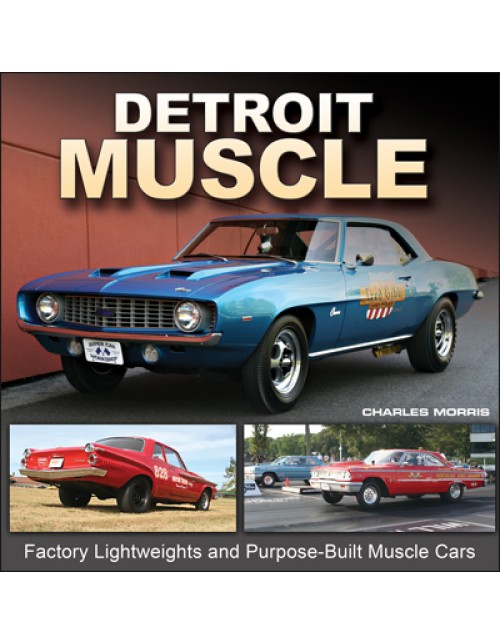
The muscle car era, and the era that immediately preceded it, are a unique window in time; it is one that we will not likely see again. Post-war USA was a place where people wanted to move on from the horrors of conflict, to embrace an era of peace, and to pursue, well, all sorts of things. A whole generation was entering a new prosperity, with home ownership on the rise, gainful employment increasing, the building of suburbs, and a new interstate system connecting everyone. That all helped increase our dependence upon, and in turn, deepen our love affair with the automobile.
It started in the 1950s, when automakers realized that if they made their cars more powerful than brand X and won races on the weekends as well, sales would follow those victories into the dealership. Not everybody was enamored with all this new-found performance, however, and throughout the late 1950s and early 1960s, a struggle developed between building faster automobiles and appearing responsible and promoting the cause of safety. This led to racing participation on an all-out corporate level, followed by voluntary self-imposed and publicized bans, back-door cheating on said bans, and then investing in performance again.
A byproduct of all this activity was some really fascinating and exciting cars. It began with standard-chassis cars growing bigger and including more powerful engines. Then they graduated to being lighter, putting big engines into mid-size chassis (muscle cars), and building race cars that barely resembled anything on the street. Detroit Muscle: Factory Lightweights and Purpose-Built Muscle Cars follows the evolution of the fastest, most powerful, and exciting vehicles of the era, in both drag racing and NASCAR. From early Hudson Hornets, to the birth of the Hemi, to aluminum and fiberglass panel sedans, to lightweight special-order muscle cars ready to race from the factory.
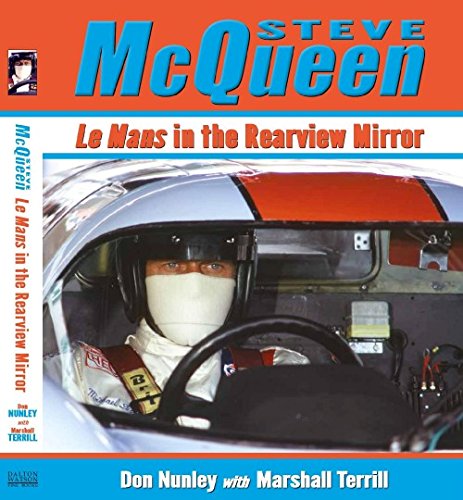
My name is Don Nunley, and I was the propmaster on Le Mans. While authors, documentary filmmakers, motoring scribes and racing enthusiasts have told and retold the story of Le Mans for decades – and for the most part they got right – I was actually right there as it all unfolded. There was nothing positive to say about the 106-minute motion picture at the time we started making it in June 1970. Six months later when filming mercifully ended, there was no wrap party, no toasts, no grand farewells; everyone just quietly went away, thanking God their ordeal was finally over. Steve McQueen was a real life racing fanatic, and Le Mans was supposed to be his cinematic dream come true. But the movie left him with bitter feelings and lasting emotional dents in his armor. There were conflicts with directors, personal excesses, budget woes, a war with the studio, a shutdown, months of delays, an unfortunate accident that left one driver without a leg, and rumors that the production company hushed up the death of a second unit crew member. In one fell swoop, McQueen ended a 15-year marriage, severed ties with his longtime agent and producing partners, did away with his production company and lost a personal fortune, not to mention control of the passion project he had planned to make for over a decade. It has taken me years to understand and digest the complex phenomenon of Le Mans, which decades after its crash-landing at the box office and savaging by critics has finally found its vindication and the approbation its star dreamed of before things took such a wrong turn when the cameras started rolling. Steve McQueen would be blown away to see that Le Mans has left an indelible legacy in the auto racing world and movie industry.











